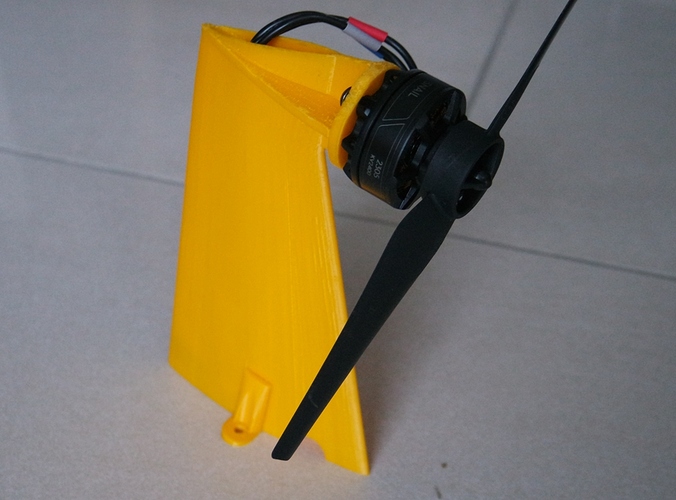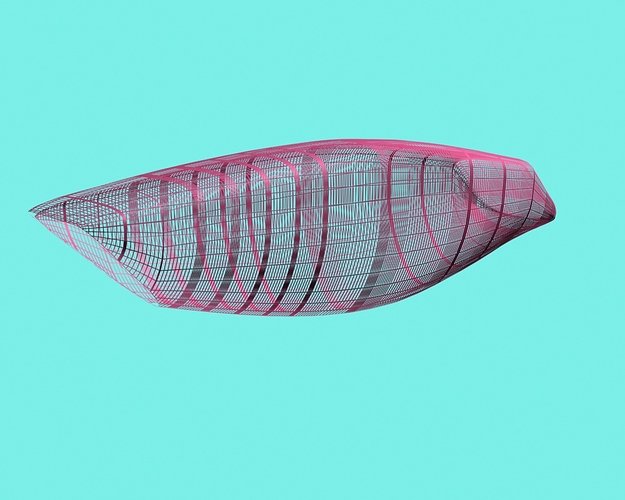@lorbass The “paste” option worked only once; after the first time it was disabled. I don’t think I tried to “Add” a new element at that point.
@losawing Thanks for noticing the low ACCEL value. It was the result of a qautotune which set all of the pitch gains very high. I’ve found since then that it seems a lot of feedforward is necessary for it to perform well.
I’ll look into how differential thrust is controlled in QACRO.
Regarding QASSIST, how should I go about testing its effectiveness in RealFlight?
As far I remember qassist should allow to fly high alpha safely in plane mode.
@losawing Thanks. It turns out that the low value for Q_A_ACCEL_P_MAX was the cause of the slow pitch response and unrecoverable tumbles. With it increased to 100,000 there is no problem stopping a tumble in QACRO mode, and max pitch rate of 720 deg/sec is feasible.
So I think “impossible to stall” is more accurate than my earlier speculation 
Although I think it is safe to say that pitch stability improves with adequate airspeed.
it sounds RF8 is now leading the match. 720 deg/s is something I never though about.![]()
I have to mitigate a little my though about stall, I should have added the pilot must be concentrated and ready to increase throttle.
I updated the BlackCat model and params in the SITL_models repo to fix that ACCEL issue.
It will be interesting to see how accurate RealFlight is w.r.t. CG and pitch stability. I’m not sure whether the aerodynamics of the large fuselage is being modeled properly.
@lorbass Would you be able to generate a mesh file for the BlackCat fuselage that I could use as a basis for 3D printing?
I can make an .OBJ File as I use it also for the Slicing Program for 3D Printing Or would you prefere 2D Meshes?
For a .OBJ File I need to work on it to make as thin “shell”. Actually it is a “full” block and probably to heavy.
I would like to do it, if you give me the time and the wanted thickness.
I was thinking of STL that I could import into OpenSCAD so that I could rescale it and add internal structure for a custom build. To import STL into OpenSCAD, “the mesh has to be manifold and should not contain holes nor self-intersections”. I’m not sure whether I want to do a small scale version with 5x3 props and foamboard wings (similar in size to my Dart) or a larger one with 10" props. I should be able to print a fuselage up to 500mm long in one piece.
But I may try to learn how to use Blender to do more complex shapes. I’m impressed by the structures that the 3Dlabprint guys have done for RC planes, but haven’t had much luck printing their stuff with my free slicer (Slic3R in RepetierHost). It does fine printing a shell of a solid object (like a vase), but the surface quality with the 3Dlabpring STLs is terrible. Also, Repetier complains that the STLs are not manifold, which may be the cause of the slicing problems.
One build for fmuv3.
Its this PR plus one or two other bits.
This enables Qassist for tailsitters, it should work as described on the wiki. I would recommend fly in the FBWA and then slow down such that you go under the airspeed and it kick in. Alternately you can use the new switch option I have added, its RCx_OPTION 80. This allows you to switch between Qassit disabled, enabled and force enabled (always on). If that seems to be working ok you can try the new Q_TAILSIT_OPTIONS bitmask this lets Qassist use the copter motors only leaving plane in charge of the control surfaces.
thanks a lot.
One question: do I need airspeed enable or does it work also with airspeed estimation.
Only my biwing has airspeed.
works with airspeed estimation, its only a method of enabling or disabling so its doesn’t matter if its abit off. If you find its going bad either, pin the throttle to get to a airspeed that disables it, switch it off with the switch or switch to a Qmode, or some combination 
I good idea to print the fuselage. I did it for Motor carrier only. Here the for the back motors of my Copter Tailsitter. Weight without motor 21 gr.
3DS MAX 2015 can export to the following formats:
.DWF .FBX . 3DS .AI .ASE .DAE .DWF .DWG …DXF .FLT .IGS .OBJ .PXPROJ .SAT .W3D
.STL is not available.
.FBX is used for RF8, .OBJ for my Slicing Program Cura which can read .OBJ and .STL
I could not find which Format OpenSCAD can import.
If you can import one of the format above, we can made a test.
I remember Tridge tried to use Blender, 2 years ago but was not satisfied with the .FBX export. Then he got a student Version of 3DX MAX 2015 usable for 3 years.
Blender can import OBJ files and export STL, so I should be able to work with OBJ files from 3DS max.
I won’t need to generate FBX files since my slicer also uses STL files.
I’m also finding that it would be reasonably easy to create a fuselage from scratch in Blender, though I doubt it would look as nice as yours.
Regarding hull thickness, I think 2mm should be good in general, although it should probably be thicker in areas that will impact the ground.
OK, we try a double jump. Can we make first a test with a already available file of the Motor carrier above. (Without the bottom tab)
When it works for you, I will work an the fuselage to make it as shell.
Blender wouldn’t load the obj file, but MeshLab accepted it, complaining that a material file was missing. I exported STL from MeshLab, and sliced it using Cura and the result looks good in my 3D printer app:
I’m pretty sure that I can import this STL into OpenSCAD and add CSG objects to customize it, although it may be easier to use Blender instead.
Great, the material file should not make problems. I aplied a yellow material, but only needed for a nice Pic.
So I will start to make a shell of the Black Cat. This is made with a lot of “outer Rings” from the front to the back and return to the front with inner Rings.
Do you wish that a made the fuselage in front and back smaller seen from top. Actually it is a rectangle as you can see in post 317.
I think the rectangular topview outline is probably best for torsional strength.
Another issue is keeping the elevons out of the water; it would be likely to damage servos if they impacted first on a bad landing.
Yes, the original is also rectangular. Will come back when first result
I made a verry nice version, but also heavy in byte or may be complexity for further modification.
I have another in sketch which is simpler but not so smooth in longitudinal axis.
That works fine in my slicer, and doesn’t take very much compute time. It also imports into OpenSCAD with no problem:
I’ve been experimenting with OpenSCAD and found a parametric model for a boat hull. This is an example exported in STL to Blender, then exported to OBJ:
straightFuse.OBJ
I wonder if that OBJ file will import to 3DS MAX, and what you think of the result. It uses only 9 lengthwise segments (mirrored for symmetry), but that could easily be increased. I also don’t know what Blender’s doing with the edge shading, but it clearly shows the segmentation of the parametric model.



